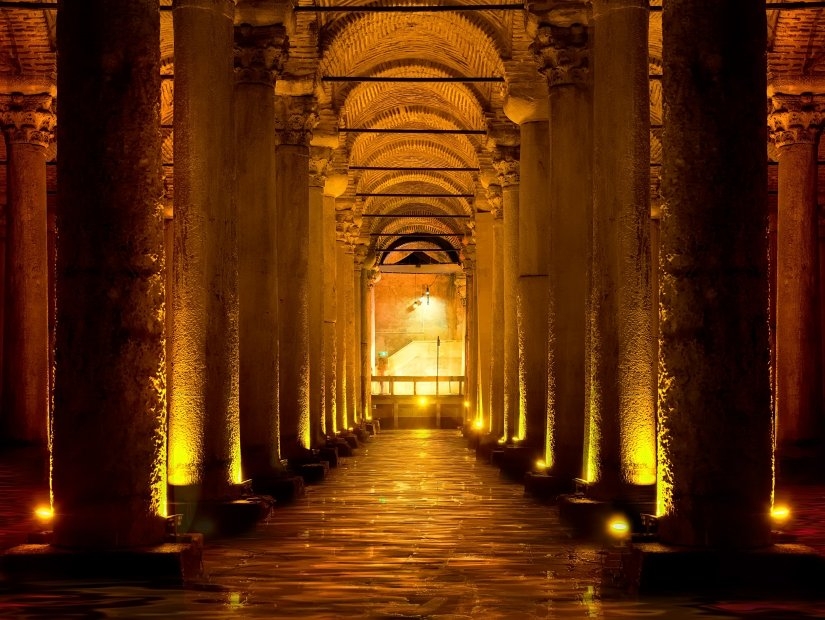Blog
The Basilica Cistern: Legend of the Underground
The Basilica Cistern: Legend of the Underground
The Basilica Cistern: Legend of the Underground
The Basilica Cistern in Sultanahmet is one of the historical symbols of Istanbul. Built by the Byzantine Emperor Justinian I (572 - 565), this large underground cistern has many marble columns rising from the water.
Istanbul was one of the most frequently besieged cities during the Roman and Byzantine Empire periods. The most important problem during sieges is the depletion of food and beverage stocks. The Roman and Byzantine emperors had many cisterns built in the city to solve this problem. The Basilica Cistern is the largest of these cisterns.
The cistern is a giant structure covering a rectangular area of 140 meters in length and 70 meters in width. There are 336 columns, each 9 meters high, inside this cistern, which can be accessed by a 52-step stone staircase.
It took 38 years for the cistern to be completed, with about 7000 slaves contributing during its construction. Tears on the pillars symbolize the slaves who died at the time of the construction, according to a rumor. With its marvelous atmosphere and special historical architecture, the cistern still fascinates visitors today.
The Basilica Cistern was used for a while after the conquest of Istanbul by the Ottomans in 1453, and water was conveyed to the gardens of Topkapi Palace, where the sultans lived. The cistern was discovered by Dutch traveler P. Gyllius, who came to Istanbul to explore the Byzantine ruins in 1544-1550.
The two Medusa Heads, which are located under the columns on the northwestern corners of the Basilica Cistern and used as pedestals, are the most beautiful symbols of the Roman period sculpture art. It is still not known where the medusa heads were taken from and brought to the cistern.
According to a legend, Medusa was a woman who had always been proud of her jet-black eyes, long hair, and perfect body, and she was in love with Zeus's son Perseus, but it is known that Athena also fell in love with Perseus and was jealous of Medusa. Rumor claims that Athena turned Medusa's hair into a snake. Upon this, everyone Medusa looked at turned into stone. When Medusa looked at the mirror, she turned herself into stone.
The Basilica Cistern serves as a museum today and it holds the title of being the largest closed cistern in Istanbul.


